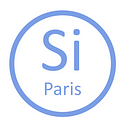What is a “new” system?
Cet article est également disponible en français.
A system is new when — by structure — it achieves different results than the system of the past. A system is a set of elements whose interconnections determine its structure and behavior. Elements are things, people, factories, bikes. Physical stuff. Interconnections are the way the elements are organized: rules, incentives, sanctions, information. Mostly abstract, invisible.
To know if an initiative may lead to systemic change, you may ask yourself if efforts target elements in the system or the interactions between the elements (i.e. the system’s structure). This is important because the potential for change — in complex systems — lies in the interactions among elements, rather than in the elements themselves. Here is an example to illustrate this.
Imagine you would like to contribute to cleaner air in your city. You know that car traffic is the main source of air pollution, and thus that the system responsible for the results you aim to change is primarily the transport system. Which policies could you ask the city hall to put forward?
The elements of the transport system include cars, people, bicycles, public transportation, and street infrastructure (roads, lights, etc). The interactions between these elements include how the public space is used (for example how much space is allocated to car use versus other modes of transportation), bus frequencies, etc.
One way to reduce air pollution could be to replace combustion-powered cars with electric cars, and a policy for this could be to provide a grant to incentivize their purchase. If the policy is successful and most cars in the city are now electric, we will likely have reduced air pollution.
A transport system that produces air pollution is, however, likely to produce other undesired results such as congestion, noise, and road insecurity (electric car production also results in undesired results along its value chain). Since we have not changed the system’s structure (but only one element), we will likely still get these results. The system is thus not a “new” one. Indeed, a city with electric cars looks much alike a city with combustion-powered cars.
In Paris, only 1 person out of 8 commutes by car, and this person — more precisely this person’s car — takes up half of the public space (Source). Instead of focusing on changing the types of cars, what if we target the interactions, the systems’ structure? For example, what happens if we ask the city hall to close streets to cars and make them pedestrian? For example, what would happen if we asked the City Hall to reduce the space dedicated to road traffic and, for example, pedestrianize streets? And/or to increase the frequency of public transportation, or extend its service schedule?
Differently from the image above, the city of the illustration below is a new one. It is a new system. The elements stayed the same, it is the way they are arranged that changed. And since the structure - the arrangement of elements changed - the city changed.
Everyday life in that city probably changed too.
Ready to know more about systems change? Join us
Author : Mariana MIRABILE
